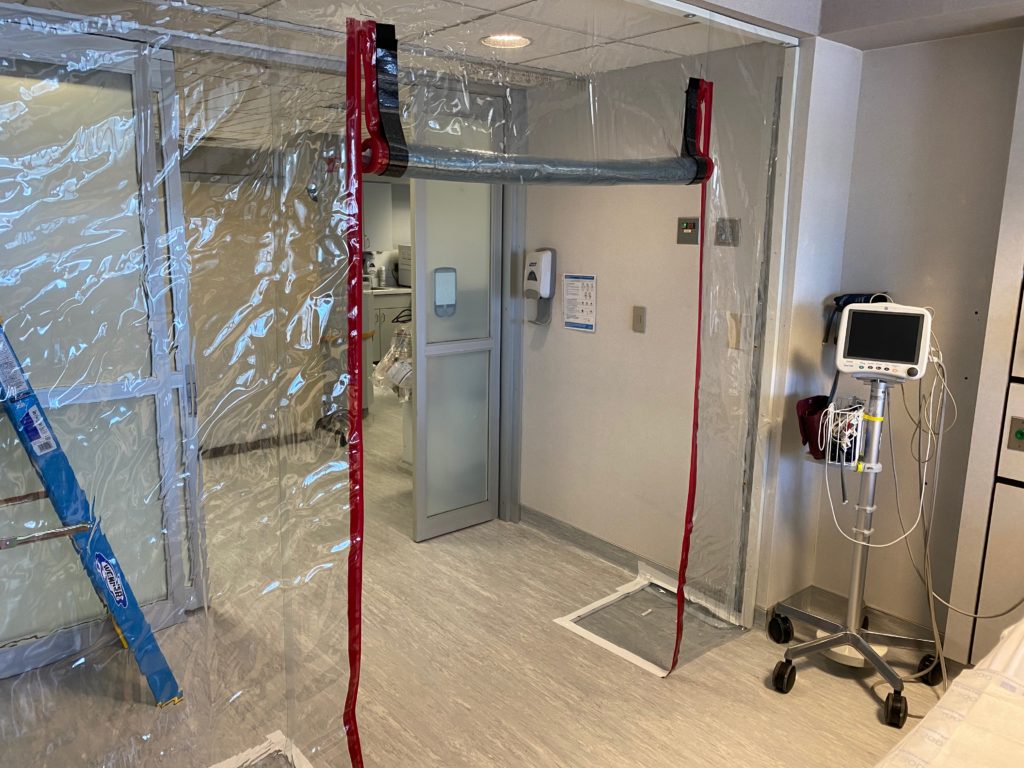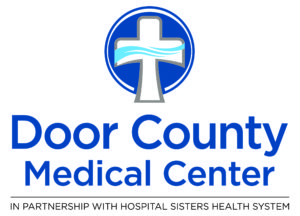Prepping for a Surge: Door County Medical Center adapts to treat community
- Share
- Tweet
- Pin
- Share

As other corners of the country have turned into hotspots of the COVID-19 crisis, northeast Wisconsin has been spared the worst blows, but local health-care officials have not been resting easy.
At Door County Medical Center (DCMC), the staff has used this time to prepare the hospital for a surge of patients, even as it hopes that surge never comes. Dr. Jim Heise, DCMC chief medical officer, said perceptions that “small town” means small-time care aren’t accurate.
“I worked in large hospitals in Milwaukee for my entire career before I came up here,” he said. “I know that there’s this thought that this is a little, small hospital in Sturgeon Bay, but I have to tell you that we can do amazing things in this hospital.”
One of those is adapting to the new reality brought on by the coronavirus. Hospital CEO Brian Stephens said that preparation started back in January, when the hospital anticipated the coming shortage of personal protective equipment and got ahead of spiking national demand. As a result, he said DCMC is in good shape for the weeks ahead.
Precautions began by limiting visitors, setting up a mobile testing site across the street from the hospital, placing monitors at all entry points and delaying elective procedures, but the precautions also extended to repurposing staff for new roles.
“We were able to take RNs and repurpose them on our hotline for COVID,” Heise said. Those nurses have become the clearinghouse for patients to determine who needs to get tested at the mobile testing site. That site enables the hospital to test people suspected of having the virus without having them enter the hospital and risking spreading it to others when those patients could otherwise get better at home.
Most people who get COVID-19 don’t need to be hospitalized. For many, there is no treatment other than to remain isolated, rest and get better at home. There is no cure or treatment for the disease, and hospitals admit only the most serious cases. Should those numbers of serious cases spike, Heise said DCMC will be able to take on more than its usual limit of patients.
Typically the hospital has 25 beds, but the hospital staff has adapted to make other unused areas of the hospital available for a potential surge. Waivers for the COVID-19 crisis allow the hospital to add as many beds as it needs, but each bed requires additional staffing.
“When we built our new bed wing in 2010, we left standing our old hospital area,” Heise said. The old intensive-care unit has been brought back online to become the hospital’s dedicated COVID-19 isolation unit. An ICU includes heart, blood-pressure and respiratory monitoring in the room, plus more intensive nursing care than a general hospital room.
Across the country, officials are pleading for ventilators to treat the most critically ill patients.

“These are very advanced machines,” Heise said. “These control the volume of air that goes into the lungs, how rapidly it goes into the lungs, the pressure forces and the amount of supplemental oxygen.”
Stephens said the hospital was reluctant to discuss the number of ventilators it has because “any number you say seems too low for most people.” But DCMC is much better equipped than a typical hospital of its size.
Stephens said most critical-access hospitals such as Door County Medical Center would have no more than two ventilators, but Door County Medical Center has six on hand. It has also been able to repurpose other equipment to make about 15 ventilators available for a potential surge in patients. But like beds, ventilators are only as helpful as the trained staff members who are available to operate them because they require a specialized skill set.
Every Monday at 6 pm, Heise takes to Facebook Live with Door County Public Health Manager Sue Powers for an hour-long session updating the public on the status of COVID-19 in Door County. They detail the ever-changing recommendations from the Centers for Disease Control, update residents on the caseload in Wisconsin and locally, and answer as many questions as they can from the audience. But when all those questions are answered, both Heise and Stephens stress that the most important part of getting through the crisis is not about hospital resources.
“We all have a part to play in this,” Heise said. “If we do our part for our community – stay at home, wash our hands, do those things – we won’t find ourselves in a bottleneck situation.”


